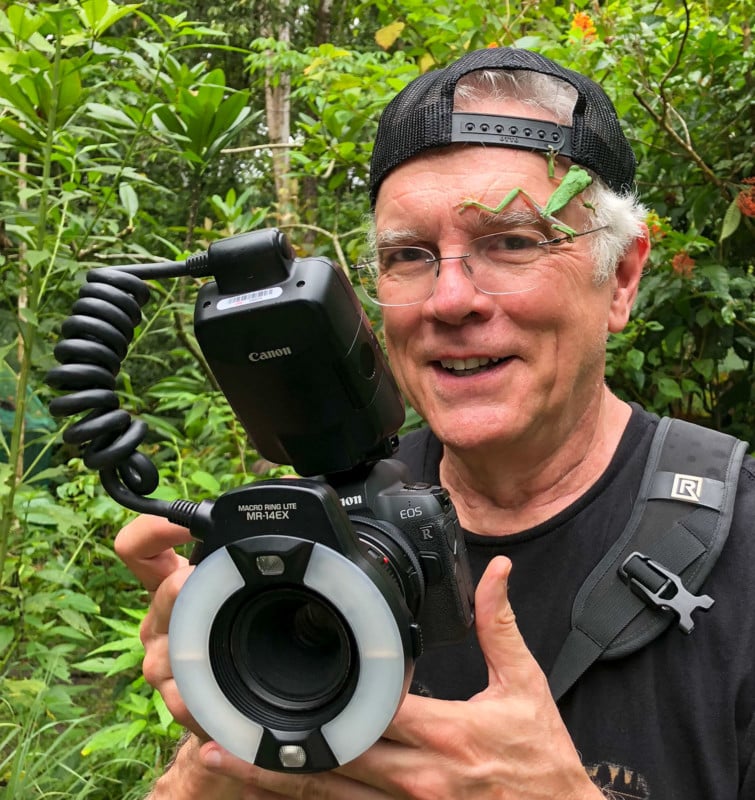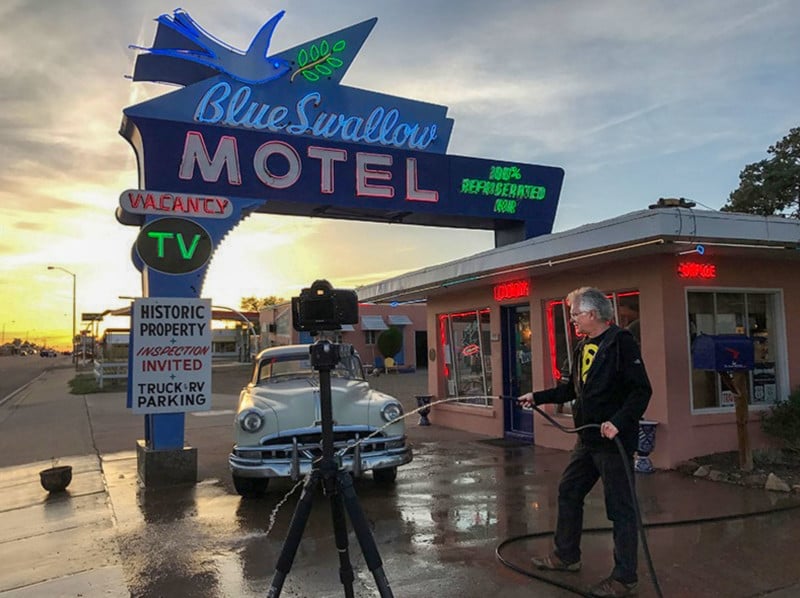
[ad_1]
![]()
Photographer Rick Sammon used HDR photography to capture the historic Blue Swallow Motel in New Mexico along the legendary U.S. Route 66. His focus was on getting the foreground tones and mood in the backlit scene.
Built in 1939, the Blue Swallow is one of the longest continuously operating motels on the New Mexico stretch of Route 66. The small 12-unit, L-shaped property is a famous sight on the highway and is listed in the National Register of Historic Places
Sammon’s image of the landmark was created as a 7-stop exposure sequence to record the rising Sun at 8:30 am in March 2013. Sammon wanted the viewer of his photo to be able to see into the building, but he also wanted to preserve the details around the Sun.
This photo was made on Canon EOS 6D with Canon EF 17-40mm lens set at 24mm and f/22.
The resulting images were compiled in Photomatix, a tone mapping program for HDR (High Dynamic Range) photography, after which Sammon played around in Photoshop and with Nik Color Efex.
Setting a Goal in Photography
“I planned to take this image when I was in New York,” explains the NY-based Sammon, who is also a photography and guitar teacher. “I checked the sunrise time to see where the Sun would rise on the day I’d be there… I had seen many photos of the motel, so I had a good idea of what I wanted.
“I wanted to make a dramatic image of perhaps the most famous landmark on Route 66 for the cover of my book, co-authored with my wife Susan, The Route 66 Road Trip: Eat, Stay, Play and Shoot Like a Pro.”
![]()
The Secret of Getting a Good HDR
“To capture the entire dynamic range of the scene, keep taking underexposed images [with bracketing] until you have no “blinkies” on your camera’s LCD monitor, and keep taking overexposed images until you can see into the shadows in the image while looking at the LCD monitor,” writes Rick Sammon on his blog. “The greater the contrast range, the greater the number of pictures you need to take.”

There was not much thought applied to lens focal length selection as this was all about color and the mood it created. Sammon noticed small details like the blue flowerpot that was there in front of the office building. The night before, the photographer asked the motel owner to turn his car around to face him when he took the photo with the sun rising from behind.
Using a Small Aperture for Sunstars
To get good sunbursts, Sammon closed down his zoom lens to its minimum aperture of f/22 and partially blocked the Sun with the motel sign for a better sunstar effect and to avoid getting excessive flare in the lens.
Although this is a backlit shot, the ground provides enough fill light for the front of the car, and the HDR pulls out detail from the shadows on the white car. Also, when shooting at f/22 at this distance, there is no possibility of illuminating shadows with a hot shoe flash.
Having the neon lights turned on for this shot may have weakly registered, but Sammon wanted this morning shot to be completely different from a separate evening one, which had the neon lights on in all their glory.
“I waited until there were no cars on the road,” remembers Sammon. “But only three cars passed during my shoot.”
Contrasting Tones for Visual Excitement
The juxtaposition of cool blue tones of the signage and sky above the center contrasting with the warm pink tones below of the motel office provides the contrast of clashing color schemes. This imparts visual excitement to the image. Route 66 is all about color, and this same image, if done in B&W, would not have worked as well, says Sammon.
The photographer spent only half an hour on this shoot — once he had decided on the required composition he wanted, he set up a tripod and took the bracketed sequence.

Sunrise or Sunset?
If the motel had commissioned the photographer, he might have added a model in “1960s clothing,” he says, and he would undoubtedly shoot both sunrise and sunset. He has photographed this property twice, three years apart but only at sunrise and sunset on both occasions.
![]()
In the sunset shot the photographer’s had his rental car headlights illuminating the front of the parked car, but Sammon says he prefers the sunrise one.
For all the effort put in, it was certainly worth it, as Sammon tells us that his photo of the Tucumcari, New Mexico-based Blue Swallow motel photo is definitely in his top 10 images.
“It’s not about HDR or depth-of-field or sharpness and so on,” Sammon tells PetaPixel. “Mood matters most.”
About the photographer: Rick Sammon, a Canon Explorer of Light, has been a professional photographer of travel, landscape, wildlife, and culture since he was 40 (now 71). He has written, photographed, and published 43 (not a misprint) books on photography. Sammon seems to be one of the most active photographers on the planet – dividing his time between creating images, leading photo workshops, and making personal appearances. Sammon, who has photographed in over 100 countries, started his professional photography career as an underwater photographer, producing six underwater books and leading scuba diving expeditions to the Seven Seas.
About the author: Phil Mistry is a photographer and teacher based in Atlanta, GA. He started one of the first digital camera classes in New York City at The International Center of Photography in the 90s. He was the director and teacher for Sony/Popular Photography magazine’s Digital Days Workshops. You can reach him here.
How I Got the Shot is a weekly PetaPixel feature that is published every Sunday. If you would like to share the story of how one of your best or favorite photos was made, we would love to hear from you!
Image credit: Sammon watering down the concrete and Sammon with red-eyed frog by Susan Sammon. All other photos Blue Swallow motel by Rick Sammon.
[ad_2]






